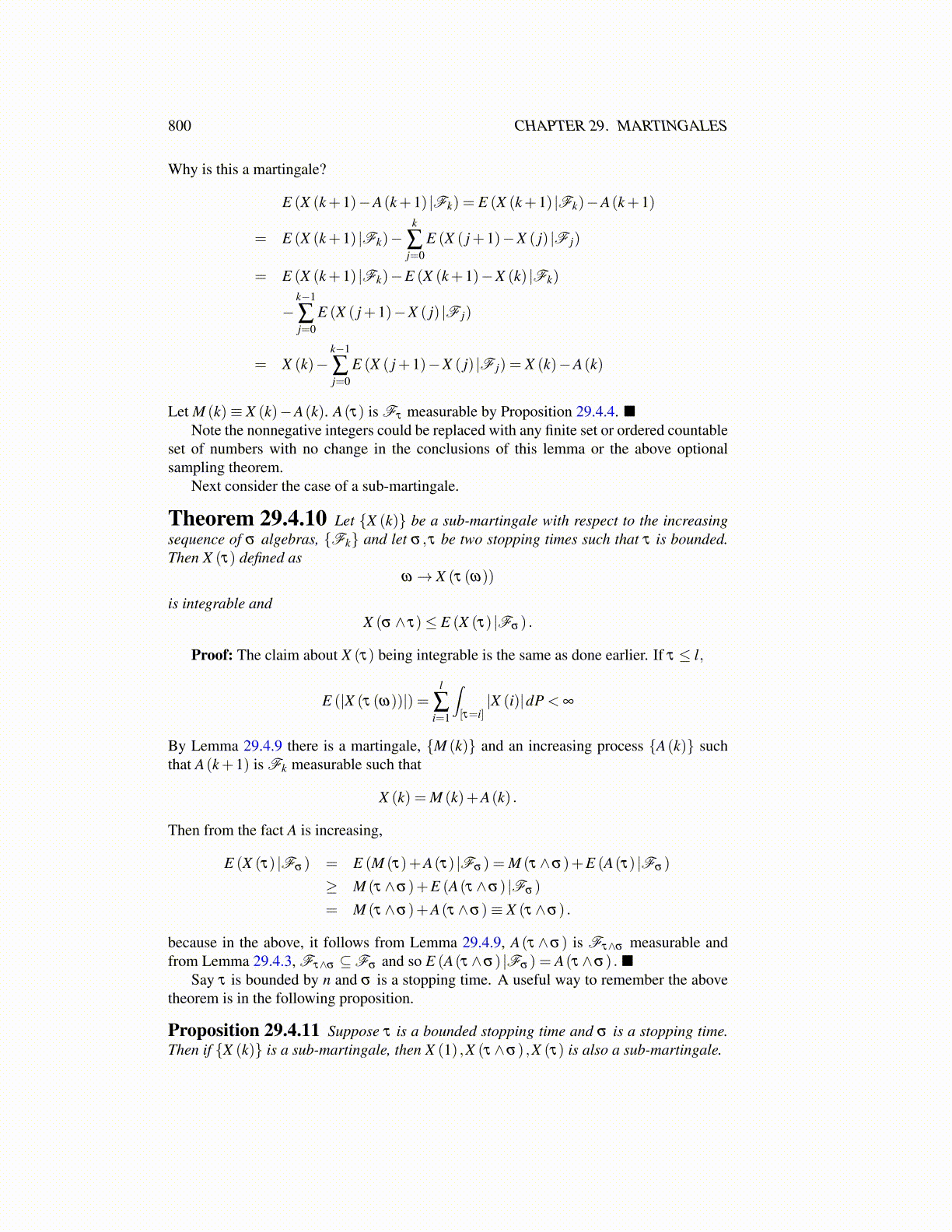
800 CHAPTER 29. MARTINGALES
Why is this a martingale?
E (X (k+1)−A(k+1) |Fk) = E (X (k+1) |Fk)−A(k+1)
= E (X (k+1) |Fk)−k
∑j=0
E (X ( j+1)−X ( j) |F j)
= E (X (k+1) |Fk)−E (X (k+1)−X (k) |Fk)
−k−1
∑j=0
E (X ( j+1)−X ( j) |F j)
= X (k)−k−1
∑j=0
E (X ( j+1)−X ( j) |F j) = X (k)−A(k)
Let M (k)≡ X (k)−A(k). A(τ) is Fτ measurable by Proposition 29.4.4. ■Note the nonnegative integers could be replaced with any finite set or ordered countable
set of numbers with no change in the conclusions of this lemma or the above optionalsampling theorem.
Next consider the case of a sub-martingale.
Theorem 29.4.10 Let {X (k)} be a sub-martingale with respect to the increasingsequence of σ algebras, {Fk} and let σ ,τ be two stopping times such that τ is bounded.Then X (τ) defined as
ω → X (τ (ω))
is integrable andX (σ ∧ τ)≤ E (X (τ) |Fσ ) .
Proof: The claim about X (τ) being integrable is the same as done earlier. If τ ≤ l,
E (|X (τ (ω))|) =l
∑i=1
∫[τ=i]|X (i)|dP < ∞
By Lemma 29.4.9 there is a martingale, {M (k)} and an increasing process {A(k)} suchthat A(k+1) is Fk measurable such that
X (k) = M (k)+A(k) .
Then from the fact A is increasing,
E (X (τ) |Fσ ) = E (M (τ)+A(τ) |Fσ ) = M (τ ∧σ)+E (A(τ) |Fσ )
≥ M (τ ∧σ)+E (A(τ ∧σ) |Fσ )
= M (τ ∧σ)+A(τ ∧σ)≡ X (τ ∧σ) .
because in the above, it follows from Lemma 29.4.9, A(τ ∧σ) is Fτ∧σ measurable andfrom Lemma 29.4.3, Fτ∧σ ⊆Fσ and so E (A(τ ∧σ) |Fσ ) = A(τ ∧σ) . ■
Say τ is bounded by n and σ is a stopping time. A useful way to remember the abovetheorem is in the following proposition.
Proposition 29.4.11 Suppose τ is a bounded stopping time and σ is a stopping time.Then if {X (k)} is a sub-martingale, then X (1) ,X (τ ∧σ) ,X (τ) is also a sub-martingale.